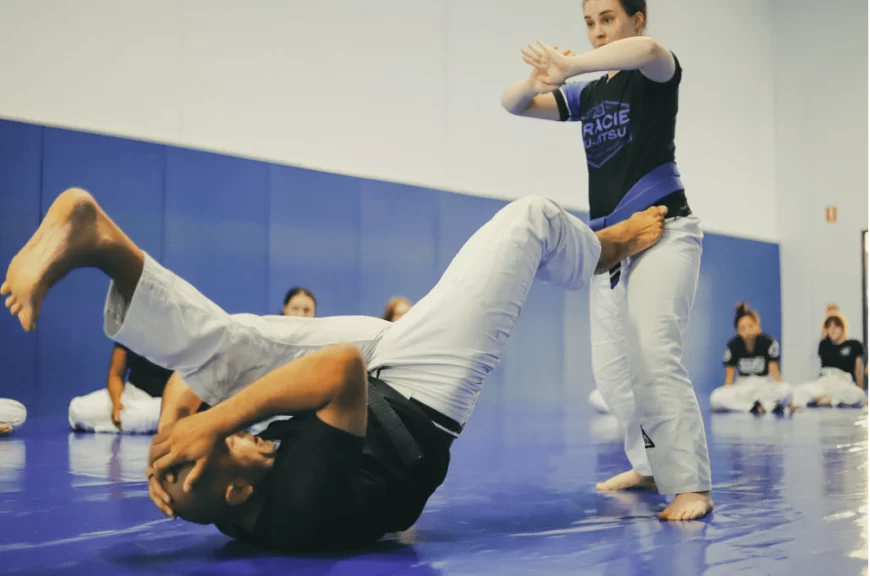
In a world where personal safety is a growing concern, self-defense is more important than ever. However, effective self-defense does not always require physical confrontation. The best strategies focus on awareness, de-escalation, and using the environment to your advantage. Whether you are looking for the best self-defense classes NYC has to offer or considering a women’s self-defense class NYC, understanding non-violent techniques can greatly enhance your personal safety. This guide explores smart strategies to protect yourself without engaging in a fight.
Understanding the Concept of Non-Physical Self-Defense
Self-defense without fighting revolves around preventing conflict, avoiding danger, and using intelligence over brute force. By developing strong situational awareness, learning de-escalation techniques, and utilizing personal security strategies, individuals can stay safe without needing to engage in a physical altercation.
1. Situational Awareness: The First Line of Defense
Situational awareness is your ability to recognize potential threats before they become dangerous. Here’s how to develop and improve it:
- Stay Alert: Avoid distractions like excessive phone use when walking alone.
- Trust Your Instincts: If something feels off, remove yourself from the situation.
- Scan Your Environment: Look for exits, safe places, and potential threats in any setting.
- Avoid Risky Areas: Stay in well-lit, populated areas, and avoid isolated locations.
Know the “Baseline” of Your Surroundings: Be aware of normal behavior in a place so you can quickly recognize unusual activity.
2. De-Escalation Techniques: Avoiding Confrontation
Knowing how to calm a situation before it escalates is a critical skill in self-defense.
- Stay Calm and Confident: Nervous or aggressive behavior can provoke an assailant.
- Use Your Voice: Speak firmly and clearly to set boundaries.
- Maintain Safe Distance: Keep space between yourself and a potential threat.
- Non-Threatening Body Language: Avoid aggressive stances that could escalate tensions.
- Use Deflective Language: Say things like, “I don’t want any trouble” or “I just want to leave” to show non-aggression.
3. Using Everyday Objects for Self-Defense
Many items you carry daily can serve as improvised self-defense tools:
- Keys: Held between fingers or used for striking.
- Purse or Bag: Can create a barrier or be used to swing at an attacker.
- Umbrella: Acts as an effective deterrent for keeping distance.
- Flashlight: A bright beam can temporarily blind an attacker.
- Whistle or Alarm: Loud noises can deter criminals and attract attention.
4. The Importance of Personal Security Practices
Developing good safety habits can significantly reduce your risk of encountering danger.
- Share Your Location: Let friends or family know your whereabouts when traveling alone.
- Use Safety Apps: Apps like Noonlight or bSafe can alert authorities if you’re in danger.
- Secure Your Home and Vehicle: Lock doors, use alarms, and be cautious when entering unfamiliar places.
- Avoid Predictable Routines: Vary your daily travel routes to reduce risk.
5. Learning From the Best Self-Defense Classes in NYC
Enrolling in a self-defense class can reinforce non-violent techniques and provide practical skills for avoiding danger.
- Best Self-Defense Classes NYC: Look for classes that emphasize de-escalation, situational awareness, and non-violent techniques.
- Women’s Self-Defense Class NYC: Women-specific courses often cover scenarios like escaping holds, handling verbal confrontations, and improving confidence in safety strategies.
- Virtual vs. In-Person Training: Some courses offer online training on conflict avoidance and self-defense principles, complementing hands-on practice.
6. Understanding the Role of Self-Defense Laws
Knowing the legal framework of self-defense helps you make informed decisions in emergencies:
- Reasonable Force: The law allows you to use reasonable force to defend yourself.
- Duty to Retreat: Some states require you to attempt to escape before using force.
- Stand Your Ground Laws: In certain jurisdictions, you have no obligation to retreat if threatened.
- Weapons Laws: Know the local laws regarding carrying self-defense tools like pepper spray or stun guns.
7. The Psychological Aspects of Self-Defense
Self-defense is not just about physical readiness but also mental preparedness. Developing a strong, confident mindset can often deter potential attackers.
- Confidence in Your Abilities: Being aware of your strengths and capabilities can make you appear less vulnerable.
- Handling Fear Effectively: Fear is natural, but learning how to channel it into constructive action is key.
- Mental Rehearsal: Visualizing different self-defense scenarios and planning responses can help you react quickly in real situations.
- Understanding Adrenaline Response: Knowing how your body reacts under stress can prevent panic and improve decision-making.
8. The Importance of Community and Support Networks
Building a network of trusted friends, neighbors, and colleagues can improve your safety.
- Buddy System: Walking or traveling in pairs can deter potential threats.
- Self-Defense Support Groups: Joining groups or online forums can keep you updated on safety tips and local incidents.
- Neighborhood Watch Programs: Participating in local safety initiatives can contribute to a more secure environment.
- Communication Plans: Have emergency contacts and know how to quickly reach help if needed.
Conclusion
Self-defense without fighting is about being proactive rather than reactive. By focusing on situational awareness, de-escalation, personal security habits, and learning from professional best self-defense classes NYC or women’s self-defense class NYC, individuals can significantly enhance their personal safety without resorting to physical confrontation. Safety begins with preparation, and the right knowledge can empower anyone to protect themselves effectively.
